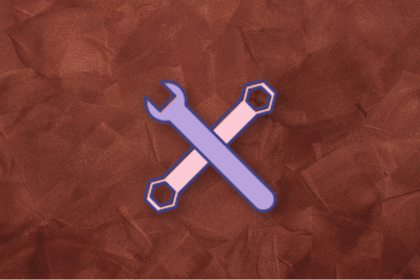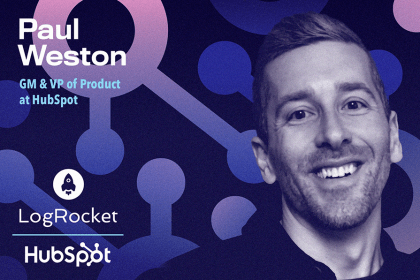Product managers are frequently expected to create flawless, seamless products, but it’s crucial to remember that PMs are humans too. Just like any other human, product managers do and can make mistakes.

As a product manager, I have made my fair share of mistakes throughout my career. For example, in the early months, I often focused too heavily on my own assumptions and didn’t gather enough customer feedback in the product development journey. This resulted in a few products that didn’t meet the needs of the target audience and underperformed in the market.
This surely made customers unhappy, as well as the whole team who worked so hard for months. However, I can only say that I learned valuable lessons from these mistakes and have since made changes to my approach to product management.
In this article, I will share with you several types of mistakes a product manager can make and how to avoid them based on my personal experience as a PM.
PMs have to collaborate with a variety of different people, whether that’s in their own teams, in their organization, or with outside stakeholders. It’s easy to make these mistakes, but important to be aware of them:
This mistake can happen when a product manager doesn’t actively listen to customer feedback and market trends. Failing to engage with customers and understand their needs leads to a product that doesn’t meet their expectations or performs very poorly in the market.
All products are made for customers, Thus, their feedback is critical to the product’s success. PMs need to regularly update the product based on how the final customer wants it to be, but we sometimes tend to get lost in what we think is good.
To avoid not listening to your customers, it’s best to collect feedback from multiple sources such as surveys, user interviews, user testing, support tickets or feedback forms, social media monitoring, or analytics.
Ultimately, the methods you choose depend on your budget, your customers’ preferences, and your expertise.
A few years ago, I had a tough time communicating with two stakeholders. This communication failure led to misunderstandings, missed deadlines, confusion, and unnecessary corrections.
So, what do you need to do as PM? The PM is responsible for making every stakeholder understand, “in their own language,” everything they need to know about the product and its development process. Hold meetings and encourage stakeholders to ask you as many questions as they can if something is unclear. Be available for your team when they need you.
If developers don’t clearly understand what is exactly expected from them, they will develop something very far from what you imagined. You will end up spending more time trying to correct what could have been avoided from the start.
If the sales team doesn’t understand the value of your product, they will not be able to sell it well.
If the shareholders do not understand how your product will bring them more revenue, will they be able to trust the company?
It is your duty as a PM to give adequate answers to each stakeholder.
It is good to be autonomous but not in an extreme way! Previously, I had this “autonomous” side of me. I wanted to do everything alone and only share the final outcome with everyone.
All I can say about it is that not asking for help can lead to burnout and overwhelm. We, as product managers, are often responsible for juggling multiple projects and stakeholders simultaneously, which can be challenging to manage alone.
Collaboration with others is necessary for creating successful products that meet the customer’s needs. I know sometimes it can be hard or awkward to work with certain team members, however, you can overcome these obstacles to make the teamwork smoother.
When we talk about decision making, product managers have a lead role in this. A product manager needs to make many decisions that will affect the product and the team, ranging from product strategies to prioritization.
Making the right choices can be a challenge. However, it can be easier by avoiding the mistakes below.
I had an experience working under an autocratic boss before, and product decisions used to be mainly made based on top management requests. Little-to-no data analytics were taken into account.
The result was that we developed product features that were not needed at all or lacking in many ways. We would receive a load of messages from clients who didn’t understand, didn’t know how to use the feature, requested a change in it, or even requested to delete it.
Time and effort were wasted on unwanted products.
This is a huge mistake and a common one! By ignoring data, a product manager might miss out on opportunities to improve the product. They could even launch a product that doesn’t perform as well as it could.
One of the main skills a PM should have is analytical thinking. A product manager is surrounded by data and must know how to make use of it.
As stated above, a product manager listens to the market through data. They should also be able to prioritize effectively, using data and metrics to determine which features and improvements will have the most significant impact on the product’s success. They should also have a strong understanding of the competitive landscape, using data to monitor competitors and identify growth opportunities.
An analytical PM should also be able to communicate insights effectively to stakeholders across the organization, using clear and concise language to explain the reasons behind product decisions.
Without data backing up your decisions, no one on your team will be able to trust you!
I discovered over the years that being a PM is not about testing your luck, it is about making justified decisions based on data.
Ignoring changes in the market or failing to adapt to customer feedback makes your product outdated and no longer relevant.
I understand it can be a challenge — changes are always hard. I can imagine you thinking about how to convince stakeholders about the changes that need to be made, especially the tech team because changes generally require additional development from the tech side.
However, you should keep in mind that change is inevitable and not adapting your product to your customers will cost you much more than development time and effort. Your customers will simply choose your competitors over you!
A product manager needs to plan product roadmaps, testing, development processes, development efforts, releases, tasks for the tech team, and so much more. And the more you need to do, the higher the probability is to make these mistakes.
This mistake is made quite often when a PM tries to appeal to stakeholders or lacks estimation abilities. It is also quite common among novice product managers who want to do well.
This happens when a product manager promises features or functionalities that can’t be delivered on time (or at all). This can damage the trust and reputation of the product and the company, making it harder to retain customers and gain new ones.
This can also make the product manager less trustworthy among stakeholders.
So, what should a PM do?
PMs should set realistic expectations and communicate openly with stakeholders about what can and can’t be delivered. If you think it is hard or impossible to release a feature within the current launch, be honest about it and suggest that you work on it on the next release.
Trying to do too much at once can lead to a product that is over-complicated, lacks focus, and ultimately fails to meet any goals.
Furthermore, prioritizing the wrong tasks may lead to launching irrelevant features and overlooking what is really needed to be done at that instant.
How can you avoid this mistake in the first place? Well, you can think about customers first!
Try to prioritize features and functionalities based on your customers’ feedback, and data analysis without forgetting your company’s goals. This will help the team meet the needs of its target audience.
A product manager can be responsible for managing a team, conducting negotiations, and dealing with all the stakeholders’ demands all at once. Therefore, it is natural for a product manager to make mistakes while trying to seek broader recognition and get along with everyone.
It is a product manager’s job to listen to everyone, but trying to appeal to everyone can lead to a product that lacks a clear value proposition and fails to capture the attention of any particular audience.
Defining a target audience and focusing on developing a product that meets their specific needs and preferences is crucial.
To do so, a PM needs to set clear goals and objectives, prioritize tasks effectively, create a roadmap to guide the team, communicate and make sure all stakeholders are on the same page, break down tasks into manageable chunks, practice time management, and regularly review progress.
More importantly, a product manager must learn how to say “No” when it’s necessary.
A product’s quality simply shows how much the product fulfilled its intended purpose and to what extent it met expectations.
Generally, when something goes wrong with a product (bugs, client complaints, or other), the first person we turn to in order to ask for solutions or complain is the product manager. The more mistakes you can avoid regarding product quality, the more peace of mind you will have after the release.
I am sure you have had this moment in your career as a PM when you think that you have done more than enough testing, but as soon as you decide to conduct more tests, problems and bugs start appearing again.
Launching a product without adequate testing can lead to major issues that could have been prevented if noticed earlier.
Thorough testing helps identify bugs and other issues before the product is released, reducing the risk of customer complaints and negative reviews.
While some companies have testing experts and advanced tools, in smaller companies, testing is generally done by team members like PMs, product owners, or the marketing team.
It is not complicated to do thorough product testing, product managers can follow the testing advice I summarized below:
In conclusion, making mistakes is an inevitable part of being and growing as a product manager, just like in any other profession. The key is to learn from those mistakes and take steps to avoid making the same ones in the future.
Listening to customer feedback, prioritizing effectively, communicating transparently with stakeholders, and making decisions based on data are all essential components of successful product management.
While it’s important to strive for a flawless product, it’s equally important to recognize that product managers are human beings who will inevitably make mistakes. By acknowledging and learning from those mistakes, they can become better equipped to create successful products and happy customers.
Featured image source: IconScout
LogRocket identifies friction points in the user experience so you can make informed decisions about product and design changes that must happen to hit your goals.
With LogRocket, you can understand the scope of the issues affecting your product and prioritize the changes that need to be made. LogRocket simplifies workflows by allowing Engineering, Product, UX, and Design teams to work from the same data as you, eliminating any confusion about what needs to be done.
Get your teams on the same page — try LogRocket today.

Trey Courtney talks about his process for evaluating partnerships or acquisitions and how he successfully implements these initiatives.

Asma Syeda shares the importance of responsible AI and best practices for companies to ensure their AI technology remains ethical.

What hard skills do PMs need in 2025? Learn how AI tools can help you level up in SQL, Figma, A/B testing, and more.

Paul Weston talks about “quantifying the unquantifiable,” i.e., bringing in objective data for things that otherwise seem hard to measure.